By Anouk Gilmour
Have you ever considered that yoga could be an asset to your work as a cam model or content creator? Yoga may seem like a complicated, spiritual esoteric practice, but it’s actually less religious and ancient than thought. The average moving yoga class that’s practiced in most North American studios today is a modern-ancient hybrid with a surprising past.
Yoga: Then and Now
The word yoga comes from the root “yuj” in Sanskrit which means “to yoke,” or join together. It is accepted that this means that through yoga, the self (atman) and the Divine (brahman) become one.
In “The Origins of Yoga,” author Mark Singleton explains that when yoga came to the West in the late 1800s, asana – or, yoga postures — were not a focal point of teachings. Popular yogis visiting from India praised practices like breath manipulation, meditation and positive thinking instead of asana. Ancient yogic texts like The Yoga Sutrasand Upanishadsdo not mention any yoga poses. It turns out, it was European gymnastics programs that made their way to India in the 1900s that inspired yoga as it is today.
Modern yoga is a mix of Indian and Hindu tradition from ancient texts and European gymnastics programs. The internal practices that The Yoga Sutras described evolved to combine physical postures and moving sequences that were popular at the time.
Stretch More, Breathe Mindfully, Work Better
Yoga is not as mysterious as it may seem, and a yoga practice does not have to interfere with any religion, spirituality or lifestyle. Yoga can be as simple as taking a mindful breath.
I believe that if you can breathe, you can do yoga. I also believe that yoga in its many possible forms is a great asset as a cam model or content creator. Yoga can be a tool for us in terms of self-care and physical fitness. It can simply help with the aches and pains of our jobs or be a beautiful mind/body exploration into awareness.
Yoga stretches for the hands, wrists and shoulders are invaluable to anyone who uses a computer for work whether live camming, recording clips or editing media. And when not at the computer, camming and clips making can require us to take poses and positions that are also physically demanding. Work-related aches can be eased by regularly practicing a gentle stretching routine.
The following practices can be done one after the other or randomly as needed throughout the day.
First, take a moment to transition into your practice. Sit up tall in a comfortable position and inhale through your nose. Then exhale, also through your nose, and relax your shoulders.
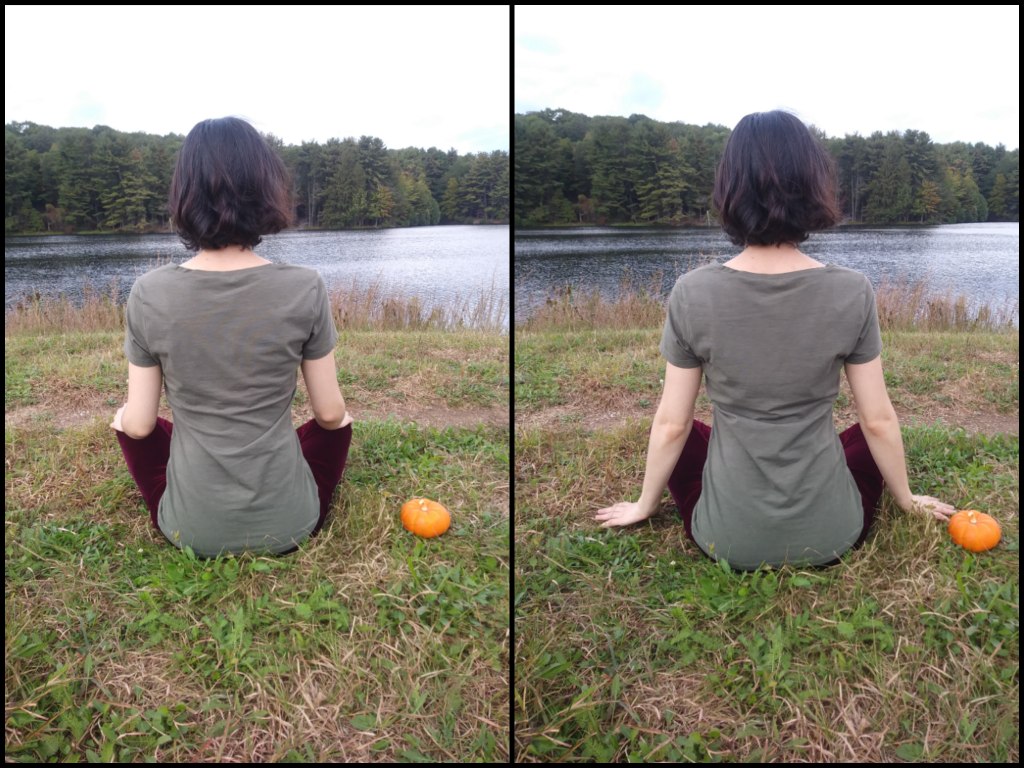
Anouk Gilmour
Once you feel centered, move on to the following three poses.
Seated Shoulder Shrugs — Seated Shoulder Shrugs can be done sitting tall at a computer chair or on a floor or yoga mat. The shrugs help create and release tension in a way that encourages the neck and shoulder area to relax while bringing awareness to an often-tight area.
Sit up tall with your arms relaxed at your sides. Inhale, hunch your shoulders up to your ears and then move them straight back as if sending your shoulders behind you. Squeeze the tops of your shoulder blades together. Exhale and relax your shoulders down two inches. (This is a visual to get that area to move. It doesn’t have to be exact and over time it will feel less awkward.) Bend your elbows to get more of a squeeze.
Repeat three rounds.
Here’s part one:
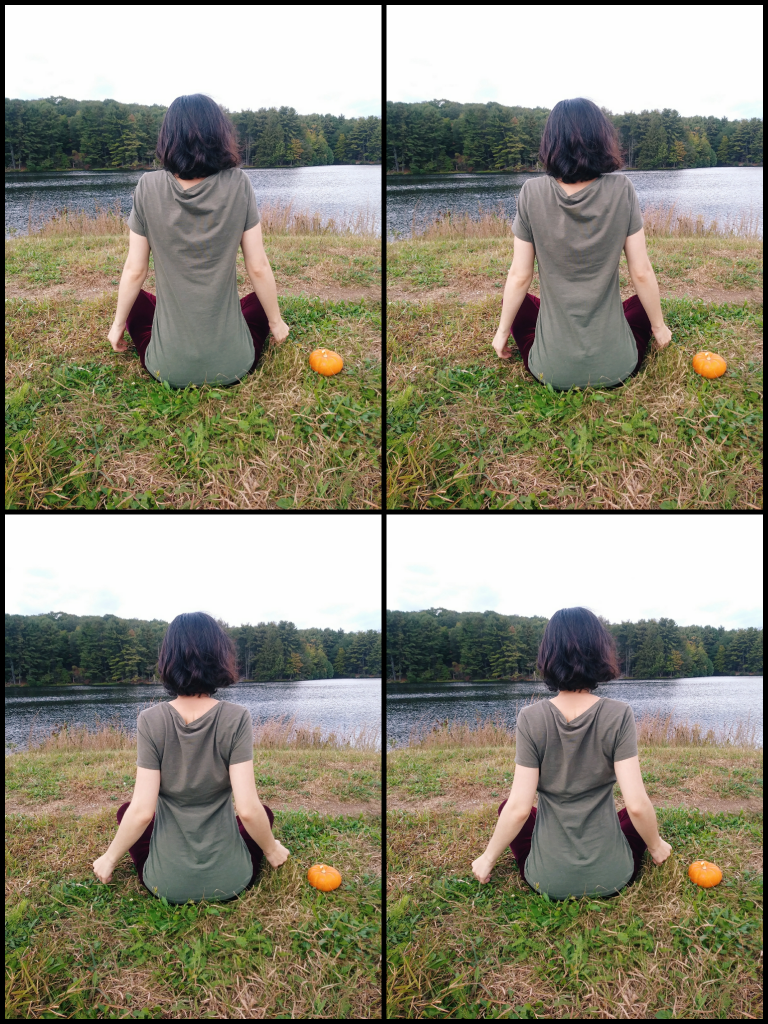
Anouk Gilmour
…and here’s the deeper shoulder squeeze with bent arms:
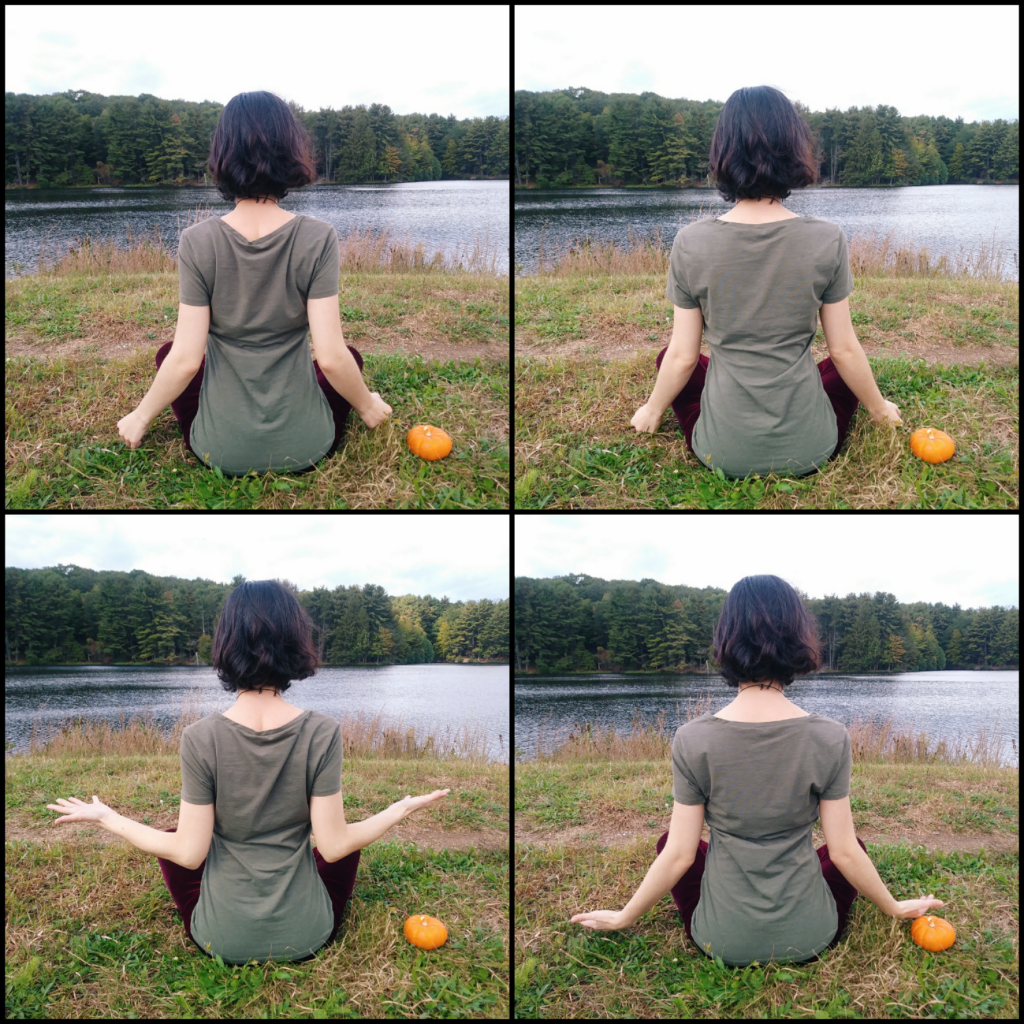
Anouk Gilmour
Finger Stretches — Finger Stretches will release tightness in the joints of your fingers and hands.
In a comfortable seated position, extend your arms in front of you, palms facing away from you, with your fingers pointing down. Hold your arms shoulder width apart, at shoulder level height.
Spread your fingers apart so they are spaced evenly, and extend your fingers straight with strong energy. Take your right hand and clasp your left pinky finger. Take a deep inhale. Exhale, and stretch your left pinky back gently towards yourself with your right hand. Do this for the next three fingers.
Next, make an OK sign with your right hand’s thumb and index finger and put your left thumb in the open part between your thumb and index finger. Close your right hand around your left thumb, and gently stretch your left thumb downwards. Extend the fingers of your left hand as you do this.
Repeat for the other hand.
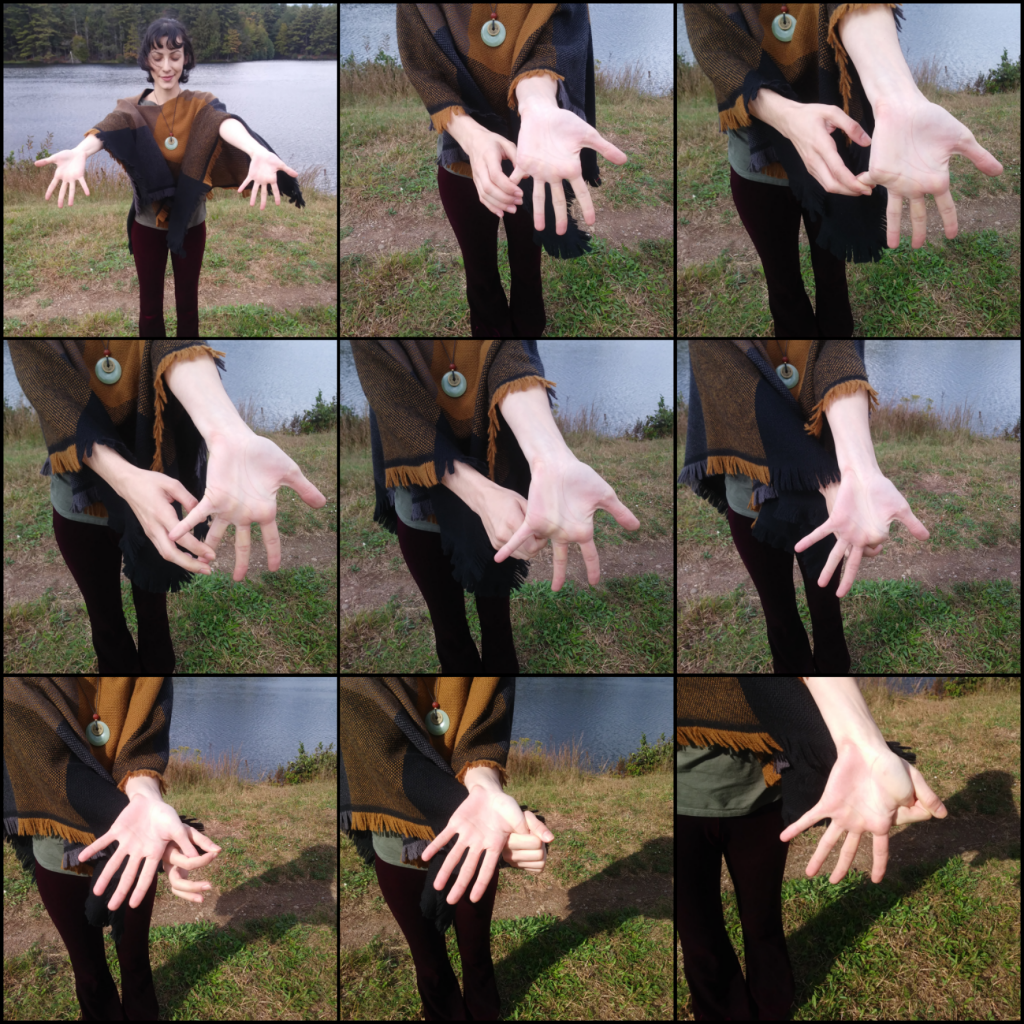
Anouk Gilmour
Chest Opener with a Strap (or Leash… or Sexy Scarf… or Durable Feather Boa) – Hunching over your computer for extended periods time can have all sort of negative effects on your back, neck and posture in general. This chest opener can help move your body back into alignment.
Get a yoga strap or anything that is a few feet long and won’t break under tension — a belt, a tie and a scarf are all options. Hold your strap taut at shoulder height in front of you, arms about three feet apart. Stand tall but relaxed, and do the following sequence slowly. Breathe deeply while doing so.
Inhale, and mindfully lift the strap overhead. Exhale, and bring it behind you with care, adjusting the strap as needed. Inhale and bring the strap back overhead. Exhale, and bring the strap in front of you and down.
Repeat this sequence three to five times.
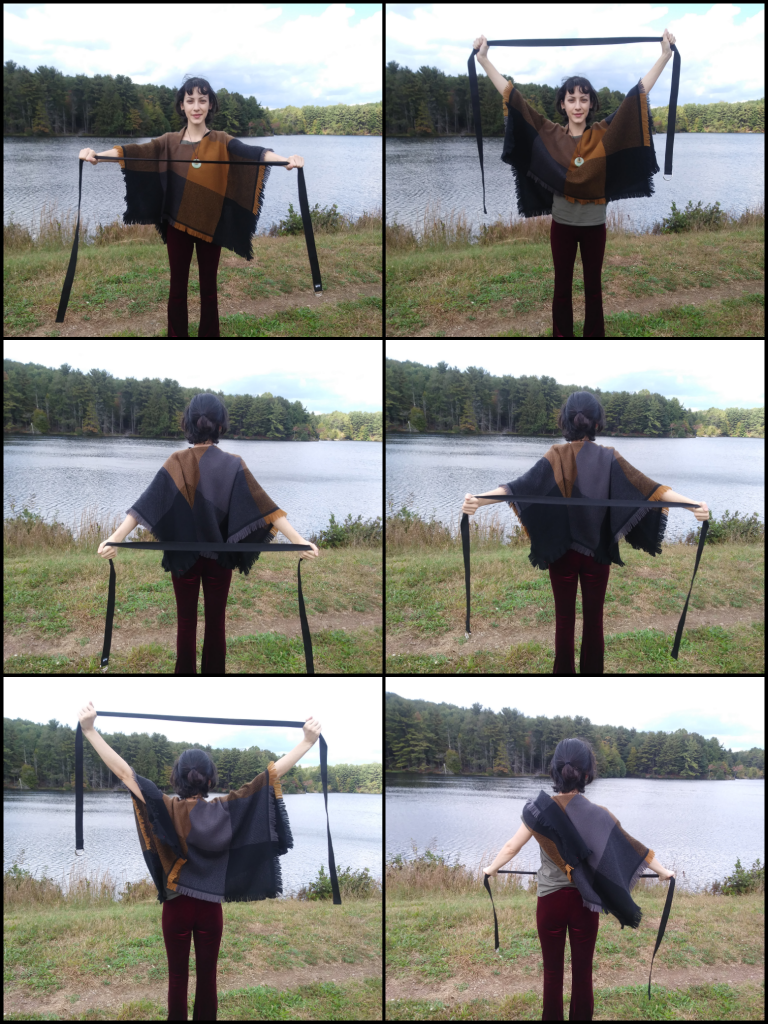
Anouk Gilmour
Taking the time to do these stretches and anything else that supports healthy joints and connective tissue will help keep your future free of injuries. Although injury is a humbling teacher, prevention is worth the time investment needed to do daily stretching or yoga.
Give yourself the gift of time and free up your future for what you really want to do!
In the words of Thich Nhat Hanh in How to Relax, “You don’t need to set aside special time for resting and relaxing. You don’t need a special pillow or any fancy equipment. You don’t need a whole hour. In fact, now is a very good time to relax.”
—
Anouk Gilmour is a registered yoga teacher at the 200-hour level. Eight years after trying camming in college, she is an amateur adult model again.


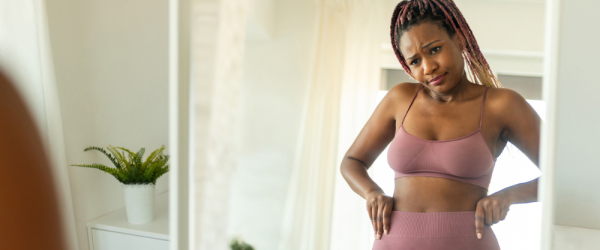
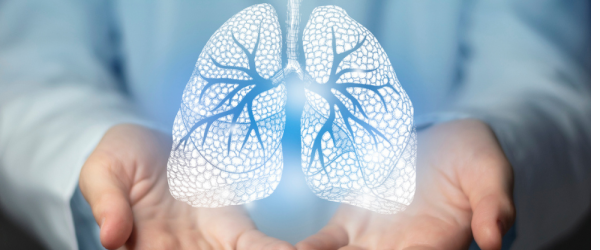







[…] the first part of this series, it was mentioned that a yoga practice can be as simple as doing mindful breathing exercises. Did […]
[…] Check out three more simple and useful yoga postures here. […]